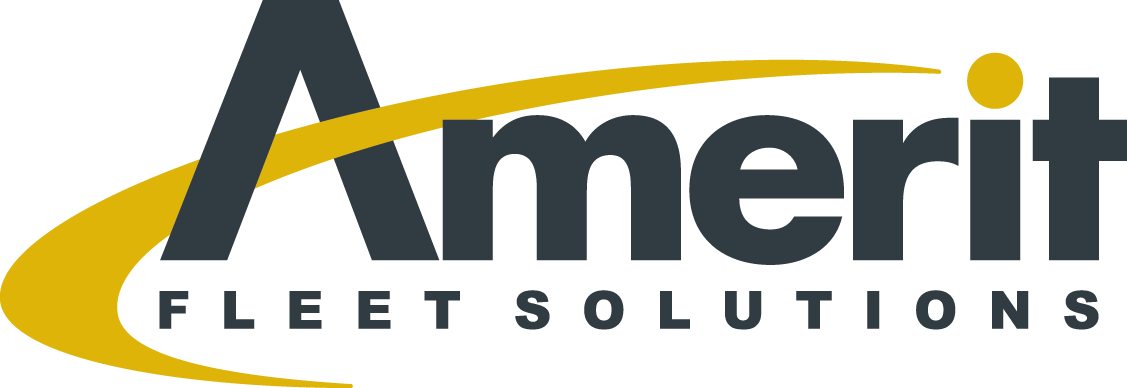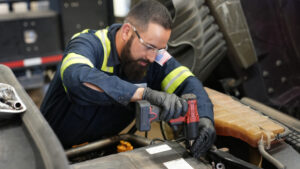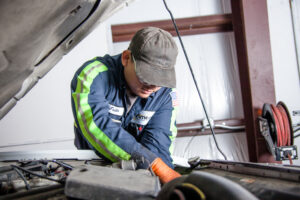When it comes to understanding electric vehicle maintenance and fleet electrification, one of the greatest challenges is preparing for the unknown. Because technology is rapidly changing, electric vehicle maintenance and fleet electrification are hot topics for our industry.
The following transcript is from a previously recorded episode of The Heavy-Duty Parts Report. Our CEO Dan Williams and podcast host Jamie Irvine discuss electric vehicle maintenance and fleet electrification, and how fleets can adopt EVs with confidence. In this interview Williams and Irvine review everything from fears commercial fleets face, to charging infrastructure and OEM capacities. Williams outlines how Amerit is stepping up and helping fleets understand what needs to be done to adopt EVs with confidence.
To listen to the full episode, please click here.
To read the full transcript, please continue below:
Jamie Irvine:
You’re listening to The Heavy-Duty Parts Report. I’m your host, Jamie Irvine. And this is the show where you get expert advice about heavy-duty parts that keeps trucks and trailers on the road longer while lowering cost-per-mile.
Electric vehicles and EVs are the way of the future, but it’s a big change for the commercial vehicle and the trucking industry. And there’s definitely some question marks around things like performance, maintenance, repairs, total cost of operation. So how can commercial vehicle fleets adopt EVs with confidence? Well, I’ve got just the man to talk to us about that. My guest today is Dan Williams. He’s the CEO of Amerit Fleet Solutions. And Dan, before founding Amerit had a background in growing companies very rapidly, twice. He’s also been on the 100 Fastest Growing Companies list. So, he knows how to scale and grow a company. He’s applying all that he’s learned in those previous companies with Amerit Fleet Solutions and turning his attention to the changing technology that is electric vehicles. Dan, welcome to The Heavy-Duty Parts Report. So glad to have you here.
Dan Williams:
Thanks for having me, I’m glad to be here.
Jamie Irvine:
Well, I’m excited to talk to you because I think that it’s a very important subject. Getting fleets to adopt EVs with confidence is a big subject right now. Obviously, technology is rapidly changing. There’s a lot of reasons for that and helping fleets and keeping the trucking industry going is of top priority. So, let’s start off by talking about some of the fears that commercial fleet operators might have. What are the fears that they have around adding EVs to their fleet today?
Dan Williams:
I think that we can probably categorize them into three groups. The first I think are fears around the EV units themselves. Are they going work? Are they going to be economical? Am I going to be able to get enough of them, in the timeline that I want? I think that one of the things that fleets are doing right now is they’re doing a lot of pilots and they’re using EV units in certain use cases because that’s really where the rubber hits the road. Fleets are trying to understand how these units will perform in different environments and there are concerns about whether they will. I think the second area of concern is around the charging infrastructure. Of course, we all know that’s going to be a bottleneck. I think as we’re digging into the details, we’re finding that there are certain use cases, in the heavy-duty world.
There are some assets that are only down a couple hours a day, which means you only have a couple hours a day to charge them, which takes the challenges around infrastructure and makes them even larger.
And then the last area I would say is, which is the area that we think that we can be a part of is the support infrastructure where. Think of infrastructure as technician training and think of maintenance footprint as infrastructure. There is great concern for when these units break, will the infrastructure necessary to get them back on the road be readily available.
Jamie Irvine:
Right, and there’s a difference between fear and a barrier. Sometimes we just have fears about things because it’s the unknown and we’re uncertain about it. And then there’s the actual barriers. So can you talk to us a little bit about some of those barriers that are legitimate and that perhaps are slowing down the adoption to some degree.
Dan Williams:
In the short-term I think the production capacity of the OEMs is certainly slowing us down. But that’s going to be addressed in the coming 12- 24 months. The power grid and charging infrastructure are also real barriers that people are facing today. I think the other thing that folks are starting to think about is the batteries and the infrastructure around the manufacturer batteries, the raw materials associated with that. There isn’t much domestic manufacturing capability. A lot of that is with other countries, which creates all kinds of challenges and risks to supply chain. I think that that’s going to be one that we’re going to see impact the industry in the coming months.
Jamie Irvine:
Right. And some of the conversations I’ve had with fleets, they’ve got a real concern also around their technicians and their maintenance people. This is like, “yeah, okay, it’s a truck and it’s got wheels and everything, but it is built very differently.” And so, there’s got to be some barriers there where they’re saying, “look, we already are short on technicians. We’re short on drivers. There’s going to be a training curve here. And that’s got to be one of the factors as well.” Is that something you’ve found?
Dan Williams:
Oh yeah, for sure. Hiring good technicians, retaining them, training them, that’s a challenge today. And right now, there is far more demand than there is supply. So, when you bring in something new, something that requires new training, that requires new systems, new equipment, that just makes those challenges even worse. And that’s certainly something the fleets are worried about. How we’re trying to address that concern is with a program that we’re calling EV Ready. Amerit has over 1600 technicians today. We’re in all major markets and we’re also working, with very large fleets. Our customers are going to be early adopters of EV. And what we’re doing to speed the adoption of EV is we’re working with OEMs, we’re working with our customers, and we’re getting our technicians trained so that we are ready. When our customers begin receiving the EV units, we will be ready to support them in that journey. We’re supporting electric vehicle maintenance and fleet electrification.
Jamie Irvine:
So let me ask you something with some of those fleets, they’ve got their own repair facilities, they employ their own technicians. Have you found that some of those fleets are saying, “hey, look, we’re going to keep taking care of the stuff we know, and we’ll bring Amerit in to help us with this new program? And just kind of like, see how it goes.” Has that been one of the situations you’ve seen?
Dan Williams:
That’s one of the situations, although I think the more common situation is where the customers are looking for a single provider that can be able to maintain both their ICE as well as EV units. And so that’s more where we’re focusing, we’re making sure that we’ve got technicians that can handle both types of assets, as well as the charging infrastructure, and the proper tooling for high voltage electric vehicles, because at the end of the day, most of the work is being done on site, during off hours with our customers. When we’re there on-site, we want to be able to do as much work as possible. And providing full scope ICE and EV services is the best way to make the technicians as efficient as possible.
Jamie Irvine:
I can see a situation like, today I’m wearing A Thank a Trucker t-shirt and it says if you’re wearing it, eating it, or drinking it, it probably was brought on a truck. What I think when you just said that is that these fleets may have made the strategic decision to say, “look, we’re good at what we do, which is transportation and logistics. We’re going to bring in Amerit because maintenance is what they’re good at. And that allows us to just focus on our business.” Is that those are the kind of clients that you work with?
Dan Williams:
Absolutely. I said already that that hiring and training and retaining technicians is very challenging. And that is all we do. We’re very focused and we think that we do it well, but it’s still a challenge. What we typically see is that customers want to focus on their core business. They want to focus their attention in other areas, and they want us work with the technicians.
Jamie Irvine:
There must have been a point in time a few years ago where you said, look, this is going to be a strategic objective for our company. We’re going to focus on EV because it’s not like you can just turn a switch and have all your 1600 technicians ready to go all at once. So, like when did you make that decision? Tell us a bit of that story.
Dan Williams:
Certainly, we, like the industry as a whole, have been talking about it, and have been thinking about it now for a couple of years. I think what we are seeing, and like many are seeing, is that the pace of adoption is speeding up. And so, we’ve been reacting accordingly. I would say that early last year, we started making moves, started introducing ourselves to some of the OEMs, started forming relationships, started thinking about jointly developing training materials and how are we going to train these technicians? So, we’re probably 12, 18 months in some cases, 24 months into those relationships.
BREAK
We’re going to take a quick break. We’ll be right back. Don’t have a heavy-duty part number and need to look up a part? Go to parts.diesellaptops.com or download the app on Apple or Android to create your free account. Looking for high-quality fuel injection for heavy-duty applications? Having one supplier for fuel injection allows you to better serve customers by providing them with a complete line, which increases your sales and profitability. Learn more at ambacinternational.com/aftermarket.
Jamie Irvine:
We’re back from our break. And before the break, we were talking about how the adoption of electric vehicles is accelerating in the trucking industry. And with that, it brings unique challenges which Amerit is putting itself strategically in place to help the trucking industry to adopt EVs with confidence. Dan, you’ve made some strategic partnerships with EV truck manufacturers. For instance, there’s a press release about a partnership with Nicola. Why are service agreements with OEMs an important part to helping fleets adopt EVs?
Dan Williams:
We’re in discussions with a large number of OEMs, in fact, probably close to all of them. We’re really excited about those discussions. And I think when you think about the OEMs, we sort of think of them in two categories. The first is the incumbent OEMs that have established dealer networks and then the newer OEMs that do not. So, for the latter, the way that we can support them is obvious. They’re trying to think about how they are going to build nationwide networks of maintenance providers so that they can ensure that their assets are maintained reliably and quickly, and make sure that they can honor their warranty needs. As I said, Amerit has 1600 technicians and we’re in all major markets today. In many instances, we’re working with customers that are either already taking possessions of the assets or that they are prospects of the OEM.
So, there’s a lot of synergy there and it makes a lot of sense for us to be working with them, to try to support those vehicles as they come online from the OEMs that have established dealer networks. I think those conversations are a little more nuanced, but there’s still a lot of opportunity. You know, I said already demand right now is far outstripping supply. And you think of that both in terms of maintenance capacity, as well as just the ability to retain or to receive units. So, the customers more than ever are demanding that when a vehicle breaks, they want it fixed quickly. When we talk to the OEMs, it isn’t a conversation around either/or, meaning it’s not a binary choice of either Amerit or the dealer networks. What we’re talking about is how can we augment the dealer networks. We all want the same thing. We want a customer to have confidence that when their vehicle breaks, it will be fixed quickly and safely. The more that we can all work together to give customers confidence in that, we’re all going to win.
Jamie Irvine:
Speaking of warranty, one of the things I’ve been curious about, not only from the service perspective, also from the parts perspective, so you have our traditional truck manufacturers, they’ve got their dealer networks. We kind of understand how that traditional model works, but with some of these new manufacturers, it seems to me like they’re even more interested in complete vertical integration. So how is the, the warranty work going to be handled in those situations where they don’t have the traditional model like we’re used to?
Dan Williams:
I think that there’s going to be similarities and differences. The similarities are going to be whether it’s ICE or EV. OEMs are always going to want to have tight control over who is providing warranty work and they want to do that because it’s good business for them. They also want to do that because they want to know that whoever’s touching their assets is trained properly to do so. And of course, they should do that. That’s going to continue. I think the question then becomes, for the OEMs that don’t have those networks, they’re going to be thinking about who is going to be doing that work. And even for the OEMs that do have established networks, I think they’re going to be thinking, “How can I give customers confidence that repairs can happen quickly?” And they’re going to need to do that more so to be competitive and to be the ones that the OEMs too, or the customers choose. I think that what you’re going to see is the tools that they use, the providers that they authorize, might start to expand.
Jamie Irvine:
That makes a lot of sense. How concerned are you about some of the new trucks that are coming out that are EVs? Like I’ve seen some advertising that instead of having thousands of replacement parts, they only have like 22, do you think in the long run, we’re going to see a real decline in parts and service over time, or what’s your kind of viewpoint on that?
Dan Williams:
I think our viewpoint is probably similar to everybody else’s which is we think that there is going to be a decline in the maintenance needs, but there’s always going to be maintenance required. And I think we don’t yet know how these units are going to be performing in actual on the road use cases. Drivers are always going to have driver abuse and there’s always going to be repairs that are needed. So, I think we think that yes, the volume per unit of maintenance is going to go down. But I think that there will always be repair requirements.
Jamie Irvine:
Right. And then I guess there is a difference too, like you said, where we have like an acute problem where something broke and that vehicle needs to be fixed versus the regular maintenance. So, from your viewpoint, what are your thoughts on how those two different scenarios are going to be handled?
Dan Williams:
Similarly, to the way that they’re handled today. I think that customers are ultimately focused on uptime and they’re very focused on making sure that when they make a vehicle available, either because they had no choice because they’re down or because they’ve made it available for a PM, they want the service provider to respond quickly and get that unit back on the road quickly. And so, whether its ICE, EV I don’t really see that requirement changing.
Jamie Irvine:
When I think about the whole situation and how yes, technology is going to change things, but there’s also a couple factors with humans that are at play here. For example, we already have a huge shortage of drivers. So maybe autonomous vehicles will help solve a problem. We already have a shortage of technicians and it’s not like, birth rates are declining in the west. So, it’s not like there’s going to be an abundance of people in future generations. I think there’s going to be extreme competition for the young people coming up in every industry. In a lot of ways, it might be that the ones who are left behind in the industry and are continuing to work in this industry are just fine because technology helps solve some of these big issues that we’re facing on shortages.
Dan Williams:
Sure. There is real training that is needed to be able to support EV units. There’s real infrastructure. We’re making investments in some of our infrastructure today to be able to support the units. I think that what you may also find is that there are some small garages out there that have started to be toying with the idea of retirement and they are faced with, “do I make this investment to keep going, or do I maybe use this time to stop?” And so, I think that you are going to start to see that some of the supply is going to be a little constrained. I think that’s probably going to go along with the dynamics of reduced demand.
Jamie Irvine:
So, we like to sometimes focus on what’s going to change because we’re, you know, we all have some natural concerns and fears because of the unknown. From your perspective, what’s going to stay the same that we can count on moving forward?
Dan Williams:
A lot’s going to change for sure. But you know how we think about it is as long as there are assets, those assets are going to break and when they break customers are going to want them to be fixed. They’re going to want them to be fixed quickly. They’re going to want them to be fixed with professionals and they’re going to want to know most importantly, that those assets, when fixed are safe to be on the road. That’s never going to change. And so, the fundamentals of providing maintenance, providing it on a nationwide scale, providing it to large fleets, those fundamentals are going to stay the same. And we’re excited to be a part of what’s going on. Our customers are doing really amazing things. We’re excited to be partners with the OEMs. We’re excited to be part of this change. So, I think for us as a company, we are excited about future. We feel a lot of hope and, in today’s world, that that feels pretty good.
Jamie Irvine:
You’ve been listening to The Heavy-Duty Parts Report. I’m your host, Jamie Irvine. And we’ve been speaking with Dan Williams, the CEO at Amerit Fleet Solutions. To learn more about their company, visit ameritfleetsolutions.com. Links will be in the show notes. Dan, thank you so much for coming on The Heavy-Duty Parts Report and sharing your story and your experience and giving us a window into the world of EVs.
At Amerit, we’re supporting electric vehicle maintenance and fleet electrification for commercial fleets. For more information about our electric vehicle maintenance and fleet electrification, please visit our EV Maintenance services page.



